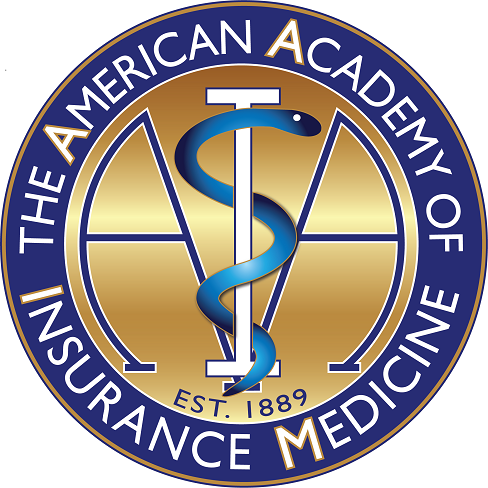Alpha-1 Antitrypsin Deficiency
Alpha-1 antitrypsin deficiency is an inherited disorder that may cause severe lung and liver disease.
Alpha-1 antitrypsin (AAT) deficiency was first described over 50 years ago by Swedish investigators and is one of the more common inherited disorders. While it occurs worldwide, its prevalence varies by population. People of Northern European, Iberian, and Saudi Arabian ancestry are at greatest risk. Severe AAT deficiency affects an estimated 100,000 Americans, and approximately 25 million people in this country carry at least 1 deficient AAT gene. Despite this, less than 6% of severely AAT deficient individuals in the United States have been identified. It has been estimated that as many as 1%-3% of patients diagnosed with COPD may actually have AAT deficiency.
AAT deficiency is inherited in an autosomal co-dominant pattern, meaning that 2 different versions of the gene may be active and expressed, with both versions contributing to the genetic trait. The disorder is caused by mutations in the SERPINA 1 gene located on chromosome 14. This gene provides instructions for synthesizing the protein AAT, which protects the tissues from a destructive enzyme called neutrophil elastase, normally released from white blood cells to fight infection. The genetic mutation in AAT deficiency changes the configuration of the AAT molecule, preventing its release from hepatocytes where it is produced. As a result, serum levels of AAT are reduced, leading to low pulmonary alveolar concentrations, where the AAT molecule would normally protect against proteases like neutrophil elastase. The resulting protease excess in alveoli destroys their walls leading to emphysema.
Accumulation of excess AAT in hepatocytes can also cause destruction of these cells and progressive hepatitis with eventual fibrosis. In adults, severe AAT deficiency usually produces chronic liver disease by the fifth decade. As a cause of emphysema, it usually presents in the fourth decade in smokers and in the fifth decade in non-smokers. Cigarette smoking accelerates disease onset by about 10 years, by increasing the amount of neutrophil elastase in the alveoli and inactivating the remaining small amounts of AAT that may be present.
Clinical findings in adults suggesting the need for serum testing for AAT deficiency include:
-
Emphysema prior to age 45
-
Emphysema in the absence of known risk factors (smoking, occupational dust, etc)
-
Emphysema of the lower lungs
-
Asthma with persistent obstruction despite aggressive treatment
-
Unexplained liver disease
-
Bronchiectasis without clear etiology
-
Necrotizing panniculitis or antiprotease 3-positive vasculitis
-
Family history of emphysema, bronchiectasis, liver disease, or panniculitis
Most hospital laboratories report serum AAT levels in mg/dL, with a reference range of about 100-300 mg/dL. Levels less than 80 mg/dL might suggest increased risk for lung and liver disease. Individuals having low AAT levels can undergo AAT protein phenotyping, which is required to confirm the diagnosis of AAT deficiency. More than 100 phenotypic variants of AAT deficiency have been identified. However, one phenotype, PiZZ, is responsible for almost all cases of AAT deficiency-related lung and liver disease.
Individuals with most of the AAT deficiency phenotypes will have serum AAT levels that are reduced to 40%-80% of normal. In the absence of smoking, AAT levels in this range are usually sufficient to protect against the adverse effects of elastase and other proteolytic enzymes. However, individuals with the PiZZ phenotype have serum AAT levels less than 10%-15% of normal, and thus tend to develop the more severe lung and liver manifestations of the disorder. Most of these individuals will experience early onset emphysema, and 50% will develop cirrhosis of the liver.
Figure 1 shows a cross section of a lung from a patient with severe AAT deficiency. Typical of most forms of emphysema, there is destruction of alveolar walls with abnormal enlargement of the airspace distal to the terminal bronchioles. An unusual characteristic in AAT deficiency is found in about two thirds of PiZZ patients: the emphysema has a marked basilar distribution, as opposed to the more severe apical involvement commonly seen with cigarette smoking. Figure 2 shows a liver with macronodular cirrhosis typical of severe AAT deficiency. The major manifestations of severe AAT deficiency in the first 2 decades of life are hepatic, with pulmonary involvement appearing later. The disorder is actually one of the leading indications for liver transplantation in newborns. No specific grading or staging system exists for this disorder.



Citation: Journal of Insurance Medicine 45, 3-4; 10.17849/0743-6661-45.3.163



Citation: Journal of Insurance Medicine 45, 3-4; 10.17849/0743-6661-45.3.163
Treatment is aimed at preventing or slowing progression of the disease, and involves: smoking cessation, bronchodilation, oxygen supplementation, pulmonary rehabilitation, and intravenous augmentation therapy with AAT. The latter is promising but has not been proven to improve survival or slow the rate of progression of emphysema. In selected cases, lung volume reduction surgery or lung transplantation may be considered. Specific morbidity and mortality rates for severe AAT deficiency are unavailable. Not all individuals having the homozygous deficiency will develop symptomatic emphysema or cirrhosis, but for those who do, the mortality is generally very high. In the NIH registry, PiZZ individuals had a 16% likelihood of surviving to age 60, as opposed to 85% likelihood for the general US population. Emphysema was the most common cause of death (72%), with chronic liver disease a more distant second (10%). Of those affected, the mortality rate was about 3% per year, with the excess mortality entirely attributable to lung and liver disease.

A cross section of a lung from a patient with severe AAT deficiency.

Pictured is a liver with macronodular cirrhosis typical of severe AAT deficiency.
Contributor Notes
Correspondent: David S. Williams, MD, FACP.
